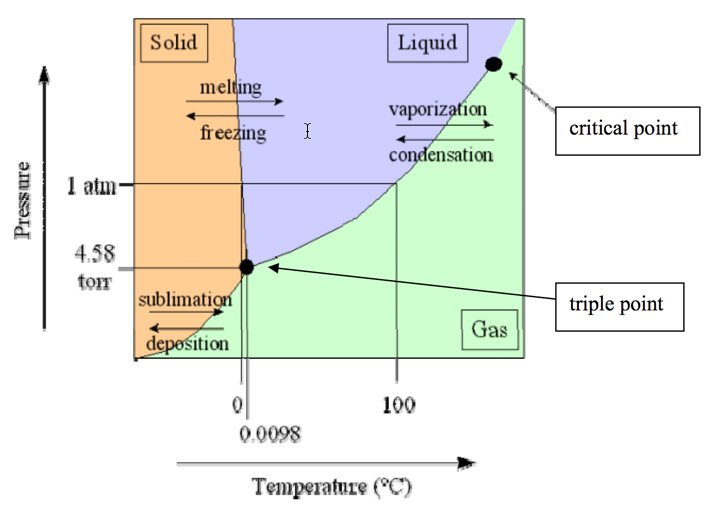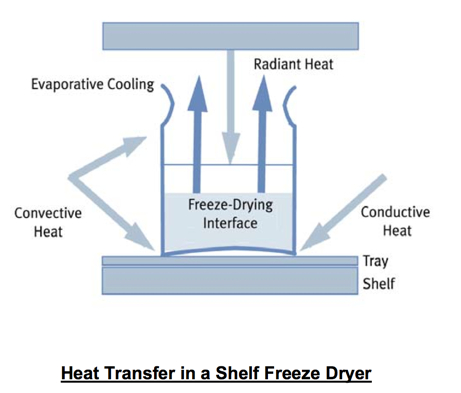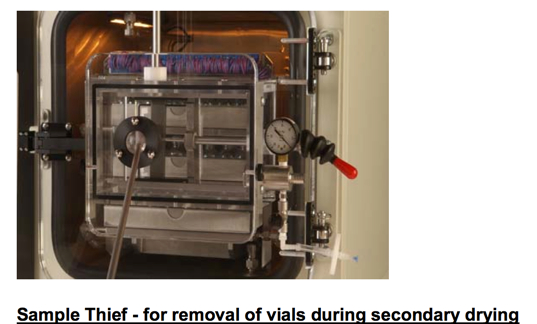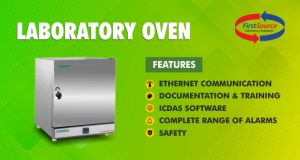Overview:
Expelling ice or other kinds of solidified solvents from an item through the sublimation procedure and removing the bound molecules of water through the desorption procedure is known as Freeze Drying. The terms freeze drying and lyophilization are utilized correspondently based on the location and industry where actually the drying process is happening. The controlled freeze drying maintain the temperature of the product low enough during the procedure for avoiding modifications in the dried item characteristics and appearance. This is a marvellous technique for storing a large number of heat-sensitive items like microbes, tissues, plasma, and proteins.
Concept of Sublimation
In a sublimation procedure, a solid change without going through the phase of liquid, directly into vapour. Understand the sublimation concept thoroughly as it is a crucial step, in acquiring the freeze-drying knowledge. Low pressures are needed for sublimation process to happen. this process is a change of phase in the energy of heat has to be included to the frozen item, so that to occur. The freeze-drying procedure the sublimation process can be described in a simple way as –
- Freeze: The item is solidified, it happens in a flask, tray, or in a vial.
- Vacuum: The item is placed in a deeper vacuum which is below the water triple point.
- Dry: Here, the heat energy is included to the item which causes the solid to sublime or purify.

Source: spscientific.com
These are the steps needed in lyophilizing an item in the batch procedure and it can be summarised as mentioned below-
- Pre-treatment or formulation
- Loading or container
- Freezing at the atmospheric pressure
- Primary drying under vacuum
- Secondary drying under vacuum
- Backfill and stoppering under partial vacuum
- Eradication of the dried item from freeze dryer
Additionally, offering an expanded shelf life and outstanding freeze-drying procedure has to result into an item that possess a short time of reconstitution with the acceptable levels of potency. This procedure should be repeatable with the temperature, pressure, and time parameters that are well defined for every step. The functional and visual characteristics of the dried item is also crucial for most of the applications,
Equipment of Freeze Drying
The important parts of freeze-drying apparatuses are –
- Refrigeration System
- Vacuum System
- Control System
- Product Chamber or Manifold
- Condenser
Refrigeration System:
Refrigeration system cools down condenser that is present in the inner areas of freeze dryer.
It is also utilised in cooling the cells present in the items number for the item solidification.
Vacuum System:
The system of vacuum comprises of an independent vacuum pump which is joined to condenser that is airtight and affixed chamber of product.
Control Systems:
This system differs in the complexity and incorporate sensing ability of temperature and pressure. The enhanced controllers will enable the programming of the total recipe for solid drying and will incorporate choices in monitoring how the procedure of freezing is progressing further. Selecting this system for freeze dryer relies on the utilization and application.
Product Chambers:
The item chambers are regularly either a complex with appended cups or a bigger chamber with an arrangement of racks on which to put the item.
The motivation behind the condenser is to pull in the vapours being sublimed off through the item. Since the condenser is kept up at a lower level of vitality with respect to the item ice. The vapours gather and once more in the condenser, transforms into ice. Purified ice amasses in the condenser and is physically evacuated toward the finish of the stop drying cycle. The temperature of the condenser required is managed by the point of solidification and fall temperature of the item. The framework of refrigeration most likely keeps up the temperature of the condenser significantly underneath the item temperature. The condenser can be situated inside the item chamber or in a different chamber associated with the item chamber by a port of vapour in a shelf solidifying dryer.
The manifold freeze dryers depend on encompassing conditions to give the warmth of sublimation to the item. This warmth input does not soften the item that a comparable measure of warmth is evacuated by vaporization of the dissolvable. The propelled rack solidify dryers can give a warmth source in controlling or facilitating the procedure of drying procedure. They can likewise utilize the framework of refrigeration to permit solidifying of item inside the unit.
Freeze Dryers:
These dryers can be grouped by the sort of item chamber:
- Manifold dryers where the item is ordinarily pre-solidified and in jars,
- Shelf dryers where the item is put in a plate or straightforwardly on a rack,
- and Combination units with both drying choices.
The freeze dryers can also be assembled by size and use:
- Research facility bench top units for R&D.
- Pilot units for procedure improvement and scale-up, and
- Bigger creation estimated units.
It ought to be noticed that notwithstanding procedure scale-up work, pilot-sized stop dryers are regularly utilized for item R&D just as production applications of little volume.
Choosing a Freeze Dryer:
Picking a freeze dryer and Lyophilizers relies upon the item qualities just as numerous other application-based factors incorporating the holder that the item will be dried in. The rack zone or number of ports required to oblige the amount to be dried in each cluster. The entire ice volume of ice to be consolidated and whether there are any natural solvents. The sort and state of item being dried and its end-utilization additionally should be examined.
Containers of Product and Containment Systems
For the product, an appropriate framework of container must be chosen. The most prominent holders of item are cups, plate, and vials. If conceivable, it is prudent in picking a holder that keeps the most extreme thickness of the item to not exactly ¾”. The extraordinary holders made of Tyvek and Gore-Tex are likewise accessible for the explicit applications where item defilement is a worry. When working with vials, item plate with removable bottoms are accessible. The plate is stacked with vials then put on a rack in the freezing dryer. Later, the base piece of the plate is slid out. This enables the vials to lay specifically on the rack and builds the warmth exchange to the item.
The control frameworks that are extraordinary, for example, glove boxes are required for freeze drying certain items, particularly when lethal materials are available.
Materials Physical Properties and Formulation
Understanding the materials physical properties that had been freeze dried is the crucial part in building up a fruitful process of lyophilization. Even though a couple of items are basic crystalline materials, most by far of items that are lyophilized are nebulous and shape polished states when solidified. Preparing and development of formulation are essential advances that regularly are taken to make an item prepared for the freeze drying. And is usable for its particular application. The excipients choice added to a detailing can seriously influence the warm product attributes and its capacity to be solidify dried in a sensible measure of time.
Freeze Drying Recipe
For the lyophilization process to take place in a rack freeze dryer requires the working procedure plan or cycle. This in some cases alluded as a Recipe. Ordinarily, there are different advances required for both solidifying and drying of the item. Time settings, singular temperature, and weight should be resolved for each progression. Every particular item or plan that is lyophilized requires the advancement of a stop drying process that depends on the one of a kind attributes of the item, the measure of item and the compartment utilized. There is no all-inclusive safe recipe that will work with each item.
Freezing
It is critical that the specimen be completely and totally solidified preceding pulling a vacuum and beginning the procedure of drying. The item that is unfrozen may extend holder outside when it is set under a vacuum. Item is set in a vial or carafe relying upon the amount and after that solidified in a different bit of hardware with simple manifold freeze dryers. Choices incorporate standard research facility coolers, shell showers, and direct drenching in nitrogen in liquid form. The shell freezing includes pivoting a jar containing the specimen in a solidifying shower. So, the specimen solidifies on the flask dividers. This solidifying technique augments the item surface territory and limits its thickness. It is better not to solidify a huge square of test in the base of a carafe, if the specimen will be unreasonably thick for effective expulsion of water expulsion. Additionally, the jar may break because of pressure that is uneven.

Source: spscientific.com
Further developed, shell freeze dryers have the capacity of freezing incorporated within the shelf of item, which permits the item solidifying to be cultivated inside freeze dryer. Item is either pre-stacked into vials which are then exchanged to the rack or it is stacked in mass frame specifically onto an item plate. These dryers permit the exact control of cooling rates which influences item solidifying rates and size of crystal. Bigger ice crystals enhance the speed of the process of freeze drying on account of the bigger vapor pathways left behind in the dried bit of the item as the crystals of the ice are sublimated. Slower cooling rates of shelf don’t really yield bigger crystals of ice based on the super cooling impacts. At the point, when the super-cooled fluid at last stops, it occurs very rapidly that results into little crystals of ice. In a spotless room condition with not very many particulates for nucleation of ice, there is a fundamentally more prominent super cooling measure. Few natural items cannot endure expansive crystals of ice. And they should be freeze dried with little crystal sizes of ice.
Eutectic or Collapse Temperature
Assurance of the basic fall temperature of an item is an analytic advance in setting up and upgrading a procedure of freeze drying. This basic temperature decides the most extreme temperature that the item can withstand amid essential drying without softening or crumbling. The thermal analysis and dielectric resistance investigation are basic techniques utilized to determine this product critical temperature. The solidified items can be classified as either amorphous glass or crystalline in structure. The items which are crystalline items have an all-around characterized eutectic solidifying or liquefying point which is its crumple temperature. The products of amorphous have a relating glass change temperature and they are substantially harder to freeze drying. Undefined items collapse temperature is regularly a couple of degrees hotter than its temperature of glass transition. Even though most of the materials that are freeze dried are really amorphous. But the eutectic expression is frequently utilized to depict the point of solidifying or liquefying any item.
Inspections of lyophilization of parenterals states that the producer should realize the item’s eutectic point. It is great practice in portraying the fall temperature for all new injectable or ingestible medication definitions to remain freeze dried. Not knowing the product’s critical temperature, an experimentation approach is required in deciding the suitable essential temperatures of drying. A moderate traditionalist cycle with temperatures that are low and weights can be utilized at first. The weight and temperature would be raised on ensuing cycles until proof of fall or soften back is seen which demonstrates that the item was excessively warm.
Annealing
Few of the products of amorphous frame a metastable glass with deficient crystallization when initially solidified. These items can profit by a procedure of warm treatment process, which is additionally called as Annealing. Amid this process, the temperature of item is cycled to acquire increasingly total crystallization. Toughening has the additional preferred standpoint of bigger crystal development and equivalent shorter times of drying.
Organic Solvents
The utilization of the organic solvents needs much care in the process of freeze drying. For freezing and condensing solvents, low temperatures are necessary. And they can simply pass through the condenser and tends to cause harm to the pump of vacuum. The refrigeration designs of freeze drying are accessible in giving the lower rack and temperatures of condenser expected to stop and after that gather some natural solvents. Liquid nitrogen or special filter cartridges traps might be required to gather or catch certain solvents with extremely low frosty temperatures. Security contemplations must be made when taking care of unpredictable or strong destructive materials.
The segment of drying is really a two-section procedure comprising of primary drying and secondary drying
Primary Drying
During the primary drying step, greater part of water expelled from item is by means of sublimation of every free crystals of ice. In primary drying, organic solvents are evacuated. It is a moderate procedure directed at cooler temperatures, underneath basic collapse temperature of item. Sublimation requires warm vitality to drive stage change procedure from solid to gas. Conduction, convection, and radiation are three techniques for warmth exchange which must be viewed as when an item is freeze dried. Warmth is exchanged to the cup or item through convection and radiation from encompassing condition in a simple manifold dryer. With little authority over warmth stream into item, it’s hard to control the procedure.
Large portion of warmth is moved into item through conduction and its imperative to boost item surface contact with the rack in a shelf freeze dryer. But radiation and convection effects should be considered for item consistency and process control purposes. Brilliant warmth from within item chamber dividers will cause item/vials on the rack edge to dry rapidly than item in shelf focal point. Radiation getting through acrylic entryways utilized on pilot and R&D solidify dryers has a noteworthy impact and item situated in front of these dryers will dry the quickest of all. Therefore, generation solidify dryers are planned with metal entryways and little view ports. A bit of aluminium thwart can be hung before item within a pilot solidify dryer as a shield. This will hinder item’s perspective and not permit perception amid the procedure. Since rack contact is conflicting, convective warmth exchange can help advance uniform item drying. Framework weights in range of 100 mTorr to 300 mTorr will advance a sufficient convection measure. At ultra-low framework weights under 50 mTorr, there are less gas atoms present to give convection and uneven/slower drying is likely.

Source: spscientific.com
The process of primary drying is best with much characterized sublimation front traveling through item as it dries. Over ice surface interface is dried item, underneath the interface is item with crystals of ice as yet staying to be sublimed. Towards primary drying completion majority of free crystals of ice have been sublimed, item will give off an impression of being dried. However, dampness substance can even now be in the five to ten percent because of the nearness of sorbed water particles connected to item.
Temperature and Weight during Primary Drying
Each solidified item has a special basic temperature. It is important to keep item temperature underneath this basic temperature amid essential drying to stay away from fall. The item temperature is dependent on vapor weight at ice interface and this vapor weight is dependent on both warmth rate moves into item and framework vacuum level set point. When an objective item temperature is recognized, main two factors left to decide or control are framework vacuum level and shelf temperature. Amid essential drying, framework weight and rack temperature are set and controlled in mix to yield suitable item temperature.
A prescribed methodology is to set framework weight utilizing ice table vapor weight. The item temperature is checked utilizing thermocouples and afterward rack temperature set point is expanded until item achieves its objective temperature. So, when objective item temperature is acquired, rack temperature is held steady for primary drying equalization. Certain items with high protection from vapor stream in cake dried bit may necessitate that rack temperature be diminished towards essential drying completion to keep item temperature at its objective and for maintaining a distance from fall. It isn’t prescribed to self-assertively increment rack temperature amid essential drying, as it seen on some more established heritage cycles.
Utilizing ice table vapor pressures is a logical method to decide a proper weight for stop drying. A general rule is to pick a framework weight that is twenty percent to 30% of ice vapour weight at objective item temperature. At the point, when vacuum level set point is more profound than ice vapor weight at the present item temperature, sublimation can occur. With temperature and weight parameters set, essential drying is then proceeded for a time period adequate for crystals of ice to be sublimed. Since most freeze dryers cannot control vacuum much underneath 30mTorr, at cold item temperatures, it winds up difficult to have a framework weight set point that is 20% to 30% of the vapor weight of ice. Stop drying happens at these cool item temperatures. With complex stop drying, procedure is driven by framework weight set point and surrounding temperature in room. As a result of the authority absence over warmth rate move into item, most complex dryers are worked at lower weights to keep item temperature lower.
Assurance of the Primary Drying end
A few diagnostic strategies are accessible for confirming that essential drying is finished. The most fundamental technique is to screen item temperature with a thermocouple test. The deliberate item temperature will be colder than rack temperature set point amid dynamic essential drying if warmth from rack is being utilized for sublimation stage change. At the point when ice crystals sublimation is finished, item temperature will increment and approach rack temperature. When item temperature breaks even with rack temperature, it tends to be construed that essential drying is finished.
Extra essential drying endpoint assurance apparatuses are accessible on bigger stop dryers outfitted with cutting edge process control frameworks. One such strategy involves parallel weight correlation readings between a gauge of Pirani and a capacitance manometer. A capacitance manometer gives a genuine weight perusing in item chamber. The Pirani measure will give a bogus high perusing within water vapour sight. So, when Pirani weight perusing diminishes and approaches genuine weight capacitance manometer perusing, next to zero water vapor is available and it tends reasonable that essential drying is finished. Another device is accessible with stop dryer structures that have outer condensers. A seclusion valve can be added to vapor port that interfaces item chamber to condenser. This valve can be shut for a brief timeframe and consequent ascent in weight in item chamber can be estimated. At the point when this weight risen approaches zero, no more water vapor is being created by means of sublimation.
Secondary Drying
Notwithstanding free ice that is sublimed amid essential drying, there remains a generous water atoms measure that are bound to item. This is the water that is evacuated amid auxiliary drying. Since free ice has been evacuated in essential drying, item temperature would be expanded without dissolving or collapse dread. Optional drying begins amid essential stage, yet at lifted temperatures, desorption continues more rapidly. Its rates are dependent on item temperature. Framework vacuum might proceed at a similar dimension utilized amid essential drying, bringing down vacuum levels won’t enhance auxiliary drying times. Amorphous items may necessitate that the temperature increment from essential to auxiliary drying control at an ease back incline rate to evade crumple.
Auxiliary drying is proceeded until item has worthy dampness content for long haul stockpiling. Contingent upon application, dampness content in dried items is between 0.5 percent to 3%. Mostly, more is the dryness in an item, larger is its life of shelf will be. But specific items tend to turn too dry for optimum results of storage and procedure of secondary drying has to be handled. During this process, a mechanism called sample thief is used for expelling vials from freeze dryers for content determination of residual moisture.

Source: spscientific.com
Cycle Optimization
Additionally, producing a recipe dries an item successfully still it is necessary to optimize cycle length, mainly if it crucial for repetition of procedure or scaling up for production. Process of freeze drying is multi day procedure and its cycle time can be minimized by examining certain factors. Freezing and annealing for increasing size of crystal and crystallization to enhance rates of drying, product thickness, and critical collapse temperature.
The lab pilot sized dryers of shelf are utilized for enhancing the growth for procedure scaling up to a sized unit of larger production. Lyophilized items are hydroscopic and they should be fixed in sealed holders following stop drying to keep rehydration from environmental introduction. Stop dryers can be designed with a stoppering ability to seal item while it is still under fractional vacuum inside the unit.
Freeze Dryer Care and Maintenance
Not with standing defrosting condenser and cleaning framework after each cycle, routine stop dryer support incorporates intermittent vacuum siphon oil changing and checking all seals and gaskets. Propelled controllers offer running capacity on an occasional framework test as well as hole test to guarantee that the unit is performing to unique plant determinations.
For more useful articles and technical papers, please visit our Official Blog
 FirstSource Laboratory Solutions Official Blog First Indian Scientific Online Shop
FirstSource Laboratory Solutions Official Blog First Indian Scientific Online Shop


